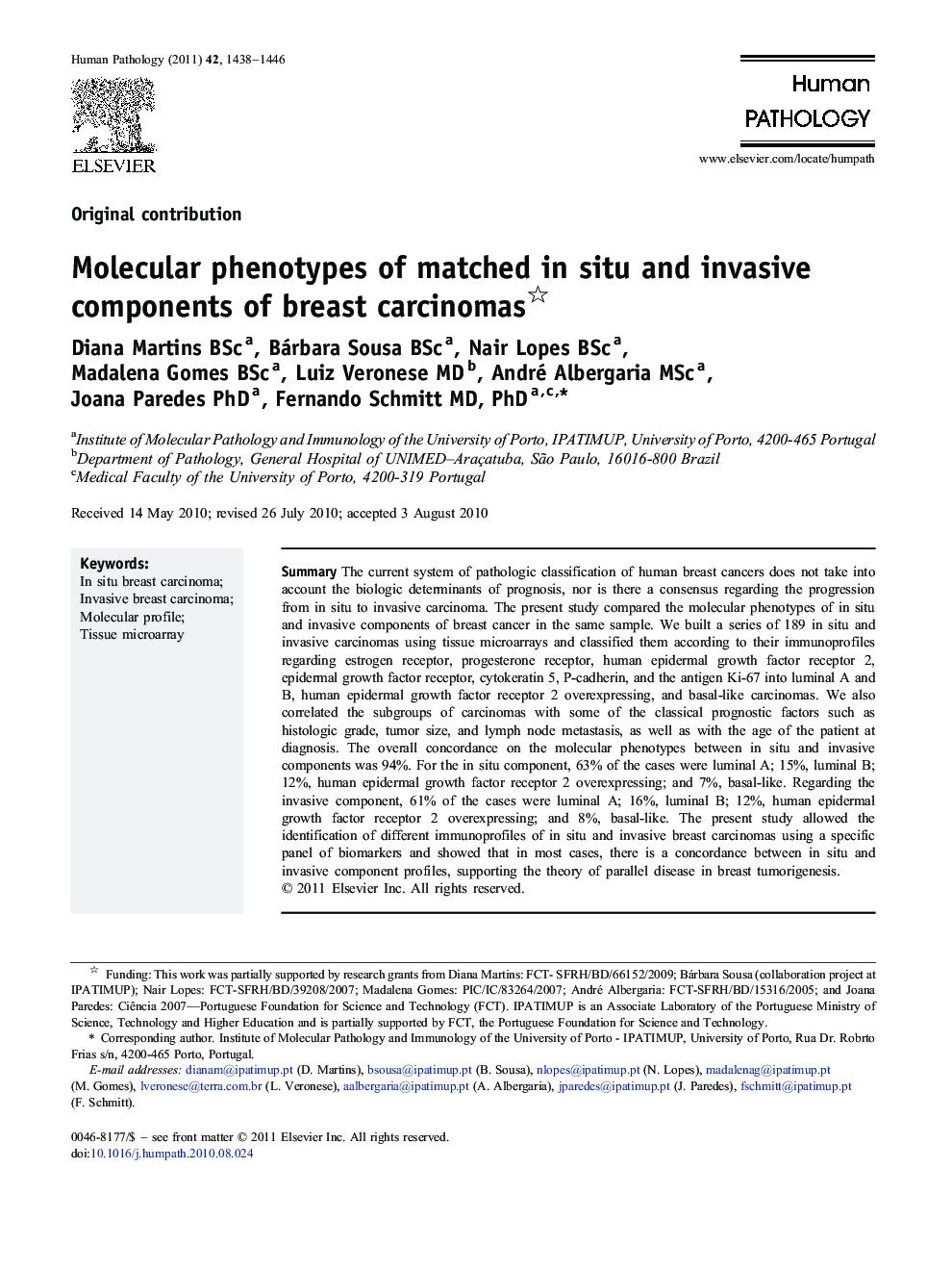| Article ID | Journal | Published Year | Pages | File Type |
|---|---|---|---|---|
| 4133972 | Human Pathology | 2011 | 9 Pages |
SummaryThe current system of pathologic classification of human breast cancers does not take into account the biologic determinants of prognosis, nor is there a consensus regarding the progression from in situ to invasive carcinoma. The present study compared the molecular phenotypes of in situ and invasive components of breast cancer in the same sample. We built a series of 189 in situ and invasive carcinomas using tissue microarrays and classified them according to their immunoprofiles regarding estrogen receptor, progesterone receptor, human epidermal growth factor receptor 2, epidermal growth factor receptor, cytokeratin 5, P-cadherin, and the antigen Ki-67 into luminal A and B, human epidermal growth factor receptor 2 overexpressing, and basal-like carcinomas. We also correlated the subgroups of carcinomas with some of the classical prognostic factors such as histologic grade, tumor size, and lymph node metastasis, as well as with the age of the patient at diagnosis. The overall concordance on the molecular phenotypes between in situ and invasive components was 94%. For the in situ component, 63% of the cases were luminal A; 15%, luminal B; 12%, human epidermal growth factor receptor 2 overexpressing; and 7%, basal-like. Regarding the invasive component, 61% of the cases were luminal A; 16%, luminal B; 12%, human epidermal growth factor receptor 2 overexpressing; and 8%, basal-like. The present study allowed the identification of different immunoprofiles of in situ and invasive breast carcinomas using a specific panel of biomarkers and showed that in most cases, there is a concordance between in situ and invasive component profiles, supporting the theory of parallel disease in breast tumorigenesis.
